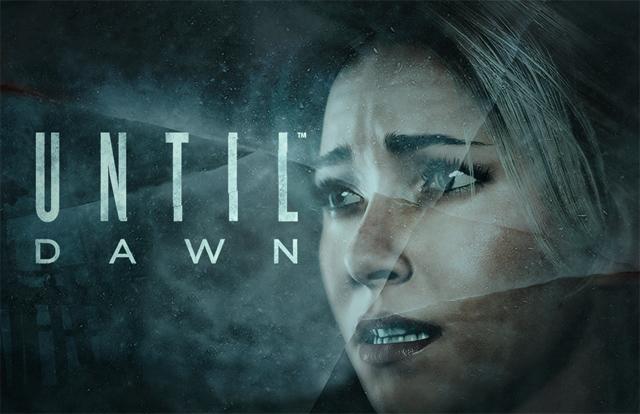Filtered by: Scitech
SciTech
VIDEO GAME REVIEW
The horrors of choice and consequence in ‘Until Dawn’
By MICHAEL LOGARTA

Horror movies, particularly the slasher flicks of the ‘80s, are notorious for their overdependence on tropes.
But “Until Dawn,” an interactive drama of the same ilk as “Heavy Rain” and “The Walking Dead,” is more than just a tribute to the most hackneyed aspects of horror cinema. It’s a narrative-driven game with a surprisingly complex choice-and-consequence system that gives even seemingly trivial actions importance in the grand scheme of things. The result? A cheesy, paranoia-inducing experience that will test your ability to make split second-decisions under duress, not to mention your capacity to endure a marathon of jump scares.
Cabin in the woods
A cruel prank goes awry, and twin sisters Hannah and Beth are lost in the snow-blanketed wilderness, never to be seen again. A year later, eight friends return to the mountaintop cabin to honor their memory, in addition to partying “like porn stars.” But that, as we all know, is an arrangement equivalent to inviting the Grim Reaper over for a tour of your home.
Needless to say, things don’t go exactly as planned. Lurking in the cabin’s shadowy hallways is a deranged masked killer; on his hit list are your horror movie victim archetypes, such as the jock, the smart one, the joker, and the sex-crazed couple. And as you can expect from the genre, people split up, explore noises that any sane person would avoid, and yell at each other. Only this time, you get to make the decisions, stupid or otherwise.
Choose well, and maybe you’ll live to see Friday
“Until Dawn” is divided into several chapters, each of which has you controlling more than one of the eight teens. Between each segment, you’ll find your disembodied self in the presence of the shrink, Dr. Hill, who is masterfully portrayed by a creepy Peter Stormare. In his goal to discover your greatest fears, he has you undergoing a series of simple tests that hinge on the choices you make. Are you more afraid of snakes, or rats? Do you prefer Ashley, or Emily? Such inconsequential questions requiring equally insignificant answers… or so they seem.
“Until Dawn” is all about such choices. When confronted by one of your friends about an issue, do you tell the truth, or lie? Which friend do you side with in an argument? In any other game, the results of your decisions have an immediate payoff or punishment. But here, you may make a choice now only to regret it much, much later.
Because of the game’s “Butterfly Effect” mechanic, even the smallest action can create a cascade of branching outcomes and opportunities. Consistently unleash your inner douchebag on a friend, and don’t expect that person to stay supportive of you. Fail to discover a weapon in a room, and you could end up defenseless against a future threat.
Some consequences are more unforgiving than others, and can even cause instant death. Thankfully, the cabin’s outlying regions are littered with totems – wooden objects that offer glimpses into the future. These short and cryptic revelations can go a long way in preventing someone from getting killed, if you know how to pay attention to details.
You’ll never be completely prepared, however, and sometimes, when evil rears its ugly head, all you can do is run. Like similar games, “Until Dawn” has plenty of quick-time events, especially during the action sequences. Admittedly, failure from pressing the incorrect buttons can get rather tiresome, but it does force you to always be on your toes.
The most harrowing moments are those that make you pick from between two equally dangerous methods of evading certain death. The game is rarely unfair; there are intelligent choices, and there are plain bad ones. The challenge is to figure out which is which in the exceedingly short amount of time you’re given to select your next course of action.
And those actions count, because “Until Dawn’s” unique save system doesn’t permit you to load an earlier game state should your decisions prove calamitous. If a character dies, they stay dead for the duration of the playthrough. The only way to bring them back to life is to start a new game. Design-wise, it’s an excellent gameplay feature, especially for a story-driven title like this. Decisions have more weight, and the sense of vulnerability is more genuine. This is why “Until Dawn’s” horror, despite the obvious clichés, works.
Speaking of horror, camera angles are often set up so that jump scares are always a possibility. This, in addition to the stellar sound effects, makes exploration a truly nerve-wracking experience. And as the night deepens and the youths go their separate ways, things only get worse. The regions surrounding the cabin are rife with history, none of it pleasant. Exploring mines, woods, and other places, you’ll come across clues that’ll shed light on “Until Dawn’s” overarching mythos. Even the aforementioned totems provide snippets that, when stitched together, create a short film explaining some much-needed backstory.
You won’t be able to find all those clues in one playthrough, though. The Butterfly Effect makes it impossible to experience everything “Until Dawn” has to offer in a single game. This again works to the game’s advantage, as you’ll always have an incentive to replay the story. You’ll be astonished how different choices can lead to wildly divergent variations in the story.
A beautiful nightmare
“Until Dawn” looks amazing, boasting gorgeous environments, and more importantly, lifelike character models and animations. Particularly breathtaking are their faces, which are able to produce an incredible range of emotions rarely witnessed in video games. They’re also spectacular recreations of the actors themselves. The most recognizable are Hayden Panettiere, who plays Sam, and “Agent of S.H.I.E.L.D.’s” Brett Dalton, who oozes with roguish charm as the token playboy, Mike. Even “Mr. Robot’s” Rami Malek – who comes complete with his methed-out Gollum eyes faithfully reproduced in glorious CG – looks incredible as Josh, the brother of the departed twins.
But the illusion isn’t perfect. Panettiere and Dalton’s models are arguably the best, but at least one of the other characters has one foot firmly in the uncanny valley, at times looking more like a creepy doll than a person. There’s a wolf whose fur looks like it belongs on last gen consoles. And occasionally, characters will move in clunky, awkward ways, further revealing the visuals for what they are: clever, if flawed approximations of reality.
The story is also on the uneven side, and eventually veers off into the realms of preposterousness. Be that as it may, it never fails to entertain. But perhaps one of “Until Dawn’s” greatest strengths is the character roster itself. Thanks in part to the excellent acting, most of the characters transcend their stereotypes to become believable, relatable characters, so that you end up rooting for them, and despair the moment they meet their violent ends. It’s a shame, however, that the deliciously sleazy Dr. Hill diminishes in prominence as the game progresses.
Final destination
“Until Dawn” has its fair share of problems. The quick-time events aren’t always fun, and the direction the story takes may come off as too ridiculous, even for a game inspired by corny horror films.
Still, the jaw-dropping technology employed to bring these characters to life will please and astound. The scares and the action will have your heart pounding. Most importantly, it’s a game in which your choices can shape the narrative landscape of your game in surprising ways – a game that you can play more than once, and find it still has a lot to offer you in terms of story and thrills.
Rating – 8/10
Platform: PlayStation 4
— TJD, GMA News
More Videos
Most Popular




